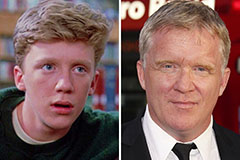The Ultimate Overview to Modern Site Layout Trends
In the ever-evolving digital landscape, contemporary website layout fads play a crucial duty in shaping customer experience and interaction. From the rise of minimalist design concepts that prioritize simpleness to the influence of strong typography in defining brand identity, each component adds to a cohesive online visibility.
Minimalist Style Principles
Minimalist style concepts highlight the concept that less is a lot more, advocating for simplicity and capability in aesthetic communication. This method remove unneeded aspects, concentrating rather on essential elements that communicate the desired message effectively. By focusing on clarity, minimalist style improves user experience, permitting site visitors to browse internet sites easily.
Core tenets of minimalist layout consist of making use of adequate white area, which develops a feeling of equilibrium and company. This unfavorable room not just routes the viewer's interest to key aspects however likewise cultivates a relaxing visual atmosphere. In addition, a limited shade combination is often employed, using single systems or soft tones to maintain aesthetic communication and prevent overwhelming the individual.
Typography plays a vital function in minimalist layout, where readable typefaces are selected for their simpleness and performance in interacting material. Eventually, minimal design principles cultivate a concentrated atmosphere that encourages customers to engage with the material, boosting the total performance of modern site style.
Strong Typography Selections
Embracing vibrant typography choices has become a specifying quality of modern-day site style, as it effectively catches attention and conveys strong messaging. Developers are increasingly using typography not simply as a practical element yet as a vital visual element that improves the general aesthetic and customer experience.

Furthermore, the juxtaposition of bold typography with minimal style principles allows for striking contrasts, boosting readability while maintaining aesthetic allure. The use of whitespace around vibrant text better highlights its significance, making certain that the message reverberates with the audience.
As electronic landscapes end up being much more competitive, leveraging strong typography makes it possible for brands to separate themselves and leave an enduring perception. The mindful selection of typefaces and their application can stimulate feelings, develop tone, and drive activity, making vibrant typography a crucial tool in modern-day website layout. Ultimately, it is an effective means to enhance storytelling and guarantee that crucial messages are not just seen but likewise really felt.
Mobile-first and receptive Layout
Mobile-first and responsive design has become an important concept in modern-day web site development, showing the increasing reliance on mobile phones for accessing on-line web content. As user habits shifts in the direction of mobile surfing, developers must prioritize creating experiences that adapt seamlessly across numerous screen sizes and resolutions.
A responsive style guarantees that an internet site automatically adjusts its design, pictures, and functionality based on the tool being made use of. Mobile-first design supporters for creating web sites initially for smaller sized screens, consequently scaling up to larger displays.
Executing mobile-first and receptive concepts not just deals with user preferences but additionally lines up with seo (SEARCH ENGINE OPTIMIZATION) practices. Significant online search engine, like Google, focus on mobile-friendly internet sites in their rankings, making it important for companies to embrace these layout strategies. In an affordable digital landscape, embracing responsive and mobile-first style is not simply page an option; it is important for guaranteeing accessibility and involvement with a diverse audience.
Engaging Microinteractions
Microinteractions play a pivotal function in improving user engagement and general web site experience, specifically in the context of responsive and mobile-first style. These refined layout aspects provide immediate feedback to individuals, making interactions much more intuitive and satisfying. Instances consist of button computer animations, notification notifies, and packing indications, which not only overview customers but likewise develop a feeling of connection with the user interface.
Integrating engaging microinteractions can considerably improve use by decreasing cognitive load. When individuals get aesthetic or acoustic comments upon carrying out actions, such as clicking a switch or sending a form, they feel more certain in their choices. This fosters a smoother navigation experience, eventually boosting customer retention.

As site design fads continue to evolve, the significance of microinteractions can not be overemphasized. They function as the refined yet effective touchpoints that transform normal communications right into phenomenal experiences, consequently raising the total effectiveness of contemporary web layout.
Sustainable Website Design Practices
Sustainable web design methods are coming to be significantly essential as the digital landscape expands and ecological concerns climb. Programmers and developers are identifying their duty to develop sites that not only serve customer requirements but additionally decrease environmental influence. This approach incorporates numerous vital techniques.
Firstly, maximizing energy consumption is critical. Internet sites should be developed to fill rapidly and efficiently, which decreases server power usage and improves customer experience. Methods such as image compression, decreasing HTTP requests, and using contemporary coding methods add significantly to this objective.
Second of all, picking green holding carriers is critical - website design. Several organizing business are currently powered by renewable resource resources, allowing internet sites have a peek at this website to run in a much more lasting fashion. This choice reflects a dedication to decreasing carbon impacts
In addition, embracing a minimalist style can boost sustainability. Less components on a page lead to less data transfer, which not just accelerates filling times but additionally conserves sources.
Last but not least, advertising electronic availability makes certain that websites reach a bigger target market without unnecessary bloat, aligning customer experience with ecological obligation. By incorporating these lasting methods, web developers can add positively to both user engagement and the earth's health.
Final Thought
In summary, modern site layout trends emphasize the combination of minimal concepts, vibrant typography, and receptive style to improve user experience. Adopting these fads is essential for developing impactful electronic experiences that resonate with customers in an increasingly affordable online landscape.
In the ever-evolving digital landscape, modern internet site style patterns play an my latest blog post important duty in shaping individual experience and involvement. By focusing on quality, minimalist layout boosts individual experience, enabling site visitors to browse web sites effortlessly.
Inevitably, minimal layout concepts grow a concentrated environment that urges users to engage with the material, enhancing the total effectiveness of contemporary internet site layout.Microinteractions play a critical role in improving individual interaction and general web site experience, specifically in the context of responsive and mobile-first layout.In summary, contemporary internet site layout patterns emphasize the combination of minimal concepts, vibrant typography, and responsive layout to enhance user experience.
 Ben Savage Then & Now!
Ben Savage Then & Now! Daniel Stern Then & Now!
Daniel Stern Then & Now! Michael Bower Then & Now!
Michael Bower Then & Now! Anthony Michael Hall Then & Now!
Anthony Michael Hall Then & Now! Nicholle Tom Then & Now!
Nicholle Tom Then & Now!